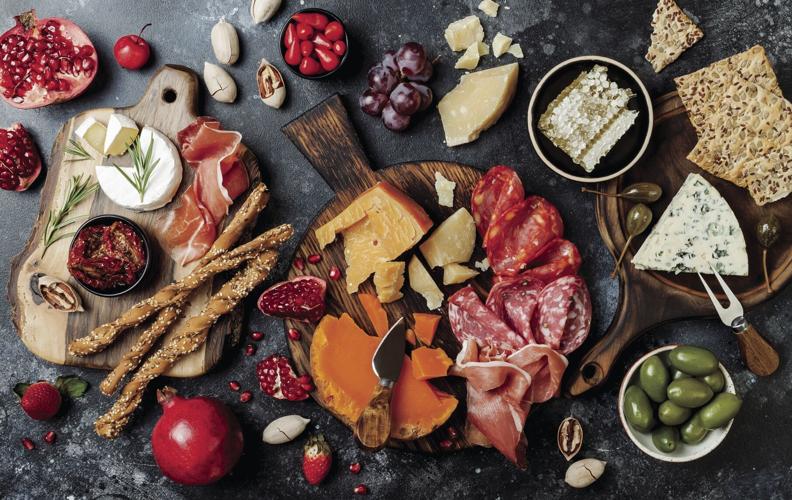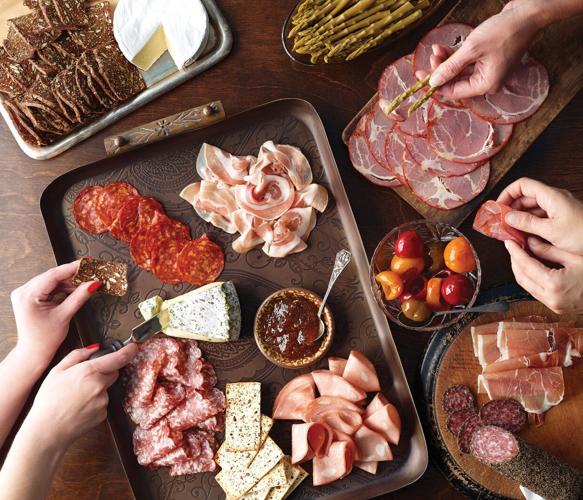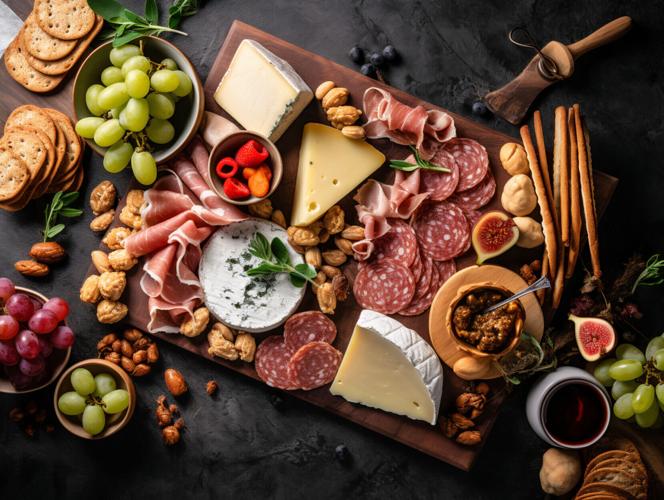
Easy to assemble and fun to nosh on, festive charcuterie boards are always big crowd pleasers at parties, especially during the holidays.
“Traditionally speaking, charcuterie is a platter of cold cured meats, but now the definition can be expanded to include a variety of cheeses, accompaniments and sometimes even desserts of different colors, flavors and textures,” said David Calandro, director of perishables for St. Louis-based Dierbergs Markets.
It all starts with the board, and any food-safe flat surface is fair game.
“You can be creative and use anything from a standard wooden board to ceramic or slate — I’ve even made presentations on decorative mirrors,” Calandro said. “You can also use several small boards instead of one large one.”

As for what to include, Calandro suggests at least two or three kinds of meat, several cheeses and sweet and/or savory accompaniments such as fresh or dried fruit, pickled vegetables, nuts, jams, olives, honey and crackers.
“I like to customize boards according to the group, the function and the style of entertaining,” he said. “For foodies with gourmet tastes, I will go more out there with blue cheeses, triple-cream Brie and pungent washed-rind cheeses. Of course, you should tailor yours to what you like to eat and what you think your guests will enjoy.”
With so many choices, it’s easy to feel overwhelmed. Choosing meats and cheeses from a specific country like Italy, France or Spain is always a safe way to go.
“You can’t go wrong with classic pairings like a Spanish manchego (cheese) with quince paste, and you can also serve fun unexpected things like a balsamic glaze in a little squeeze bottle,” Calandro said.
Adding high-end tinned seafood to charcuterie boards is a trend Calandro’s seeing more frequently, especially anchovies, sardines, tuna belly and smoked fish.
When plating, start with the stars of the show (usually the meat and cheese) and build the board around them. Or stage bowls and serving vessels where you want them on the board first and go from there. Presenting tall items like grissini breadsticks and pickle spears upright in jars creates height and visual interest. Position accompaniments and spreads next to the meats or cheeses they go with, and as a finishing touch, fill in holes with fresh herbs or edible flowers for garnish.

“To facilitate serving, I like to slice or crumble aged cheeses ahead of time, or cut them into a variety of shapes,” Calandro said. “For soft cheeses, include a couple knives or spreaders. You can find all sorts of neat charcuterie utensils in different sizes and styles.”
If you’re serving a charcuterie board as a starter or as part of a heavy hors d’oeuvres spread, plan on one or two ounces of each meat and cheese per person. If your board is standing in as a full meal, load it up.
No time to play around? Simply go to dierbergs.com to view a wide selection of special-order charcuterie and entertaining platters. Be sure to check out the specialty meats and cheeses brought in for the holidays along with grab & go charcuterie kits. See something new? Feel free to ask for a sample in the store.
For more information, consult with the store’s cheese monger or visit dierbergs.com.





